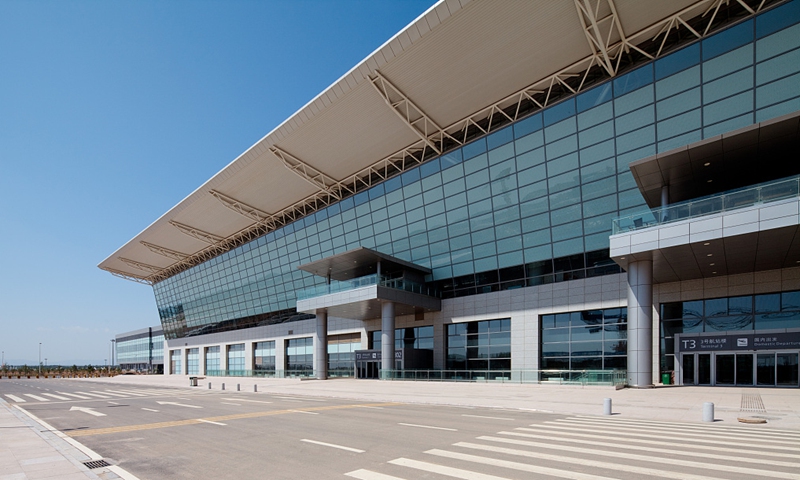
Photo: CFP
Xi'an, the ancient city in Northwest China's Shaanxi Province, started this month's third round of mass testing on 13 million people on Thursday following the highest number of positive COVID-19 cases found in a single day. It has also canceled all flights at its airport and put all residential communities under closed management.
The Xi'an Xianyang International Airport cancelled all domestic flights on Thursday. Chinese flight tracking platform Feichangzhun showed that 765 flights that were scheduled on Thursday have been cancelled. Only three international flights at the airport remained normal as of press time. Trains to multiple cities have also been suspended.
From Thursday, all residents in the city, home to about 13 million people, were required to stay indoors. Only one family member of each household is allowed to leave the house to purchase daily necessities every two days. Other than special needs such as sickness or participating in anti-epidemic work, people are not encouraged to go outside.
Xi'an now has one high-risk and 40 medium-risk regions. If residents have special reasons to leave the city, they must present a negative nucleic acid test certificate and an official letter from the local government.
Local officials had issued stay-at-home orders to more than 13 million residents as the city put all communities to closed management starting from Wednesday midnight to slow down rampant viral transmission.
The lockdown in Xi'an is one of the largest lockdowns in the country this year. Yang Zhanqiu, a deputy director of the pathogen biology department at Wuhan University, told the Global Times the key reason for the lockdown lies in the scale of community transmission in Xi'an and unclear epidemiological routes - the outbreak has demonstrated at least three transmission chains.
Facing pressure of the upcoming New Year and Spring Festival travel rush, lockdown is necessary to contain the emerging epidemic within a small scale, Yang said, adding that hemorrhagic fever, a natural epidemic disease with a high fatality rate, poses dual challenge for the city to respond.
The novel coronavirus has been sneakily transmitted within communities and community transmission has already reached a certain scale. The epidemic, characterized with the Delta strain, has entered its peak period, local officials said at a press conference on Wednesday night.
Since the first case on December 9, Xi'an has registered a total of 234 confirmed cases in two weeks. Wednesday saw 127 newly found positive cases, the highest number recorded in a single day.
The local outbreak has spilled over to at least four other cities, including Yan'an, Xianyang in Shaanxi Province, Dongguan in South China's Guangdong Province, and Beijing.
Xi'an dominated trending topics on Sina Weibo on Thursday morning.
The Global Times found a lot of the posts related to the topic were sending blessings to Xi'an, signaling a confidence from the public toward the city government's handling of the epidemic. "In the face of difficulties, unity will protect us to go through it. We shall follow anti-epidemic measures and win the fight against the epidemic!" a Sina Weibo user posted.
However, in the past two days the city indeed experienced a chaotic scene as the local implementation of the country's strategy of pursing a dynamic zero-case situation is plagued by broad questions, such as ambiguous epidemiological studies, crashed health code system, and worries for the postgraduate examinations this weekend.
The spiking COVID-19 cases have once led to a panic purchasing on Wednesday. Many supermarkets and grocery stores were packed with customers scrambling for foods and daily necessities late Wednesday, though local officials assured supplies of food, cooking oil, eggs are sufficient.
Chinese Vice Premier Sun Chunlan went to Xi'an on Sunday for inspection, urging swift virus containment measures to curb the spread of COVID-19.
A total of 135,000 students will sit for the postgraduate exam in Xi'an this weekend. The vice premier demanded careful preparation to ensure the safety of teachers and students.
Meanwhile, a total of 3,574 schools suspended offline classes and replaced them with online classes, affecting more than 2 million people in total.




